The beginnings of Country Music and the beginnings of Blues are very similar. These genres were first recorded in the 1920s, and at the time the difference between country, then called hillbilly music, and the blues, then called race music, was really only the race of the artist, which was often confused. The famous Bluesmen of the 1920s like Robert Johnson, Blind Lemon Jefferson, and Mississippi John Hurt sang mostly traditional and religious songs, later moving onto songs about other topics such as personal and cathartic stories. These types of songs were also sang by those such as Jimmie Rodgers and Eck Robertson. If you listen to the songs of this period one after another the similarities between these two genres of music are apparent
https://www.youtube.com/watch?v=FM_Xh5xPnmo
In the time since the beginning of these genres Country and Blues have have undergone many changes and gone in many different directions. For blues the biggest change was during the Great Migration when many African Americans moved out of the rural south for big northern cities like Chicago. During this time the blues was electrified and artists like Muddy Waters and Howlin’ Wolf were revolutionizing the genre. In the meantime country, music was undergoing many changes like honkeytonk music and the Nashville sound. At this time country music and blues were definitely distinct and very different despite sharing similar roots.
Today I think that blues and country are closer than they have been in a long time. There has been a push towards more traditional ways for each genre while also having a modern spin. I am glad to see this trend because hearing new music from two of my favorite genres. Gary Clark Jr. is one of the artists keeping the blues alive and revolutionizing it at the same time. He keeps the iconic electric guitar and soulful lyrics while adding a modern sound. On the country side of things Chris Stapleton, winner of the 2015 CMA Male Vocalist award, is leading the movement back to a more roots based music with his own modern spin.
Listening to these two artists really shows the similarities that they have in their music. These two genres shared similar roots as traditional music that were initially recorded as “hillbilly” and “race” music. The genres grew up in the 1900s into very different types of music but due to their roots and changing tastes the genres are beginning to become more similar.

 In September, my friends and I boarded a bus to an unknown destination. All we knew was to wear a country looking dress and cowboy boots (my favorite shoes.) The bus ride was long, about 45 minutes, but we entertained ourselves blaring country music and dancing the whole way there. We arrived at Coupland Dance Hall in Coupland, Texas, which had a southern-comfort atmosphere and a HUGE dance floor. While I had a great time at Coupland, there are many other options closer to Austin for people wanting to two-step:
In September, my friends and I boarded a bus to an unknown destination. All we knew was to wear a country looking dress and cowboy boots (my favorite shoes.) The bus ride was long, about 45 minutes, but we entertained ourselves blaring country music and dancing the whole way there. We arrived at Coupland Dance Hall in Coupland, Texas, which had a southern-comfort atmosphere and a HUGE dance floor. While I had a great time at Coupland, there are many other options closer to Austin for people wanting to two-step: Rhetoric of Country Music will be one of those classes that I will specifically remember as a favorite college class. It was a class I looked forward to every day because I knew I would learn something new that interested me every time I went to class. I learned more about a genre I thought I was an expert in and I learned how to be a better writer. Classes like these are the most valuable in my opinion because they combine the interests of students with academic progression, which is the most beneficial for learning.
Rhetoric of Country Music will be one of those classes that I will specifically remember as a favorite college class. It was a class I looked forward to every day because I knew I would learn something new that interested me every time I went to class. I learned more about a genre I thought I was an expert in and I learned how to be a better writer. Classes like these are the most valuable in my opinion because they combine the interests of students with academic progression, which is the most beneficial for learning.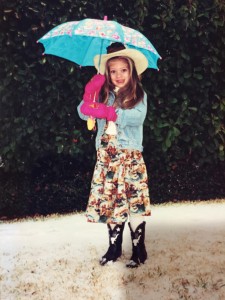
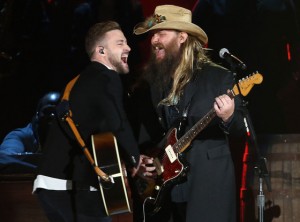
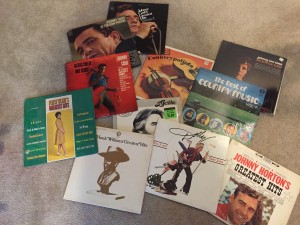
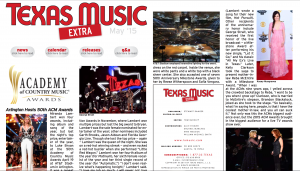

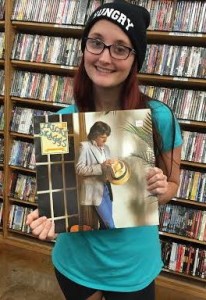 Ricky Skaggs is one of those names I would have scrolled right past on my newsfeed before taking this course, so when I saw an album of his at Half Price Books I decided to check him out; although I’ll admit Reba McEntire and Kenny Rogers made it a tough choice to make, let me tell ya. The album I listened to was “Waitin’ for the Sun to Shine” at a friend’s who begrudgingly let me use their record player; I guess she’s not a Skaggs fan. Overall I thought it was decent (hold your fire), but I think we listened to more interesting songs of his as a class. A few of the songs stood out for me, namely the two where he plays the mandolin: “Don’t Get Above Your Raising” and “So Round, So Firm, So Fully Packed” which it actually turns out is originally a Merle Haggard song and the statements he uses to describe the woman were all advertising slogans from the time. These were definitely the two most enjoyable songs to listen to on the album, along with “You May See Me Walkin'”, and “Lost to a Stranger” for their angsty heartbreak themes. Everything else seemed to have a kinda particular sound, and I wasn’t really into it, if you wanna check out Ricky Skaggs I recommend selecting a different album but it’s pretty popular so a lot of people probably disagree with me- I probably should’ve went with the Kenny Rogers record in hindsight.
Ricky Skaggs is one of those names I would have scrolled right past on my newsfeed before taking this course, so when I saw an album of his at Half Price Books I decided to check him out; although I’ll admit Reba McEntire and Kenny Rogers made it a tough choice to make, let me tell ya. The album I listened to was “Waitin’ for the Sun to Shine” at a friend’s who begrudgingly let me use their record player; I guess she’s not a Skaggs fan. Overall I thought it was decent (hold your fire), but I think we listened to more interesting songs of his as a class. A few of the songs stood out for me, namely the two where he plays the mandolin: “Don’t Get Above Your Raising” and “So Round, So Firm, So Fully Packed” which it actually turns out is originally a Merle Haggard song and the statements he uses to describe the woman were all advertising slogans from the time. These were definitely the two most enjoyable songs to listen to on the album, along with “You May See Me Walkin'”, and “Lost to a Stranger” for their angsty heartbreak themes. Everything else seemed to have a kinda particular sound, and I wasn’t really into it, if you wanna check out Ricky Skaggs I recommend selecting a different album but it’s pretty popular so a lot of people probably disagree with me- I probably should’ve went with the Kenny Rogers record in hindsight.